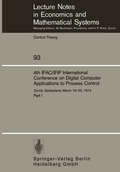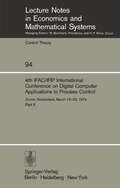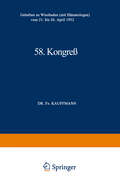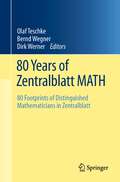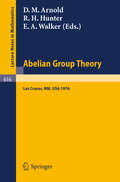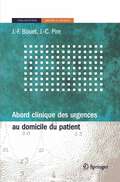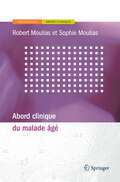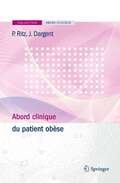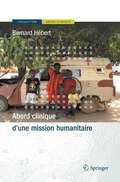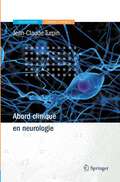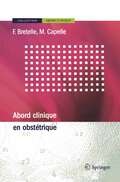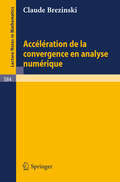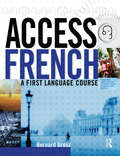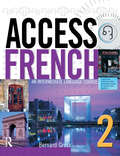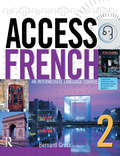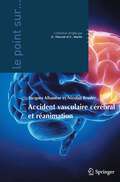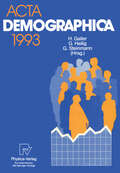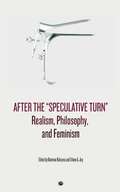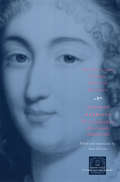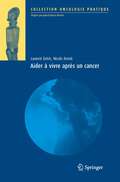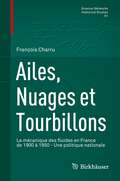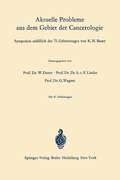- Table View
- List View
4th IFAC/IFIP International Conference on Digital Computer Applications to Process Control: Zürich, Switzerland, March 19–22, 1974 Part I (Lecture Notes in Economics and Mathematical Systems #93)
by M. Mansour W. SchaufelbergerDigital computers have been used more and more to control different industrial processes during the last decade. As of today, many sy stems are designed to include a process control computer as a vital part. The use of computers has created a need for sophisticated me thods for the operation and supervision of complex industrial proces ses. To summarize the state of the art from the practical as well as from the theoretical point of view, the 4th IFACIIFIP International Conference on "Digital Computer Applications to Process Control" will be held at Zurich from March 19 to 22, 1974. The first two vo lumes of the proceedings contain the accepted papers submitted to the conference mentioned above. The papers are arranged according to the topics of the conference. A third volume will include the six follow ing survey papers: 1. Digital Control Algorithms Prof. A. P. Sage, Dallas Texas I USA 2. Interface Problems for Process Control Prof. T. J. Williams, Lafayette Indiana I USA 3. Software for Process Computers Dr. J. Gertler, Budapest I Hungary Dr. J. Sedlak, Prague I CSSR 4. Digital Computer Applications in Metallurgical Processes Mr. W. E. Miller, Salem I USA Mr. W. G. Wright, Schenectady I USA 5. Digital Computer Applications in Power Systems Mr. D. Ernst, Erlangen / FRG 6. Digital Computer Applications in Chemical and Oil Industries Dr. H.
4th IFAC/IFIP International Conference on Digital Computer Applications to Process Control: Zürich, Switzerland, March 19–22, 1974 (Lecture Notes in Economics and Mathematical Systems #94)
by M. Mansour W. SchaufelbergerDigital computers have been used more and more to control different industrial processes during the last decade. As of today, many sy stems are designed to include a process control computer as a vital part. The use of computers has created a need for sophisticated me thods for the operation and supervision of complex industrial proces ses. To summarize the state of the art from the practical as well as from the theoretical point of view, the 4th IFAC/IFIP International Conference on "Digital Computer Applications to Process Control" will be held at Zurich from March 19 to 22, 1974. The first two vo lumes of the proceedings contain the accepted papers submitted to the conference mentioned above. The papers are arranged according to the topics of the conference. A third volume will include the six follow ing survey papers: 1. Digital Control Algorithms Prof. A. P. Sage, Dallas Texas / USA 2. Interface Problems for Process Control Prof. T. J. Williams, Lafayette Indiana / USA 3. Software for Process Computers Dr. J. Gertler, Budapest / Hungary Dr. J. Sedlak, Prague / CSSR 4. Digital Computer Applications in Metallurgical Processes Mr. W. E. Miller, Salem / USA Mr. W. G. Wright, Schenectady / USA 5. Digital Computer Applications in Power Systems Mr. D. Ernst, Erlangen / FRG 6. Digital Computer Applications in Chemical and Oil Industries Dr. H. Amrehn, Marl / FRG We hope, that the publication of these papers from specialists.
58. Kongreß: Gehalten zu Wiesbaden (mit Hämatologen) vom 21. bis 26. April 1952 (Verhandlungen der Deutschen Gesellschaft für Innere Medizin #58)
by Professor Dr. Kauffmann80 Years of Zentralblatt MATH: 80 Footprints of Distinguished Mathematicians in Zentralblatt
by Olaf Teschke Bernd Wegner Dirk WernerFounded in 1931 by Otto Neugebauer as the printed documentation service “Zentralblatt für Mathematik und ihre Grenzgebiete”, Zentralblatt MATH (ZBMATH) celebrates its 80th anniversary in 2011. Today it is the most comprehensive and active reference database in pure and applied mathematics worldwide. Many prominent mathematicians have been involved in this service as reviewers or editors and have, like all mathematicians, left their footprints in ZBMATH, in a long list of entries describing all of their research publications in mathematics. This book provides one review from each of the 80 years of ZBMATH. Names like Courant, Kolmogorov, Hardy, Hirzebruch, Faltings and many others can be found here. In addition to the original reviews, the book offers the authors' profiles indicating their co-authors, their favorite journals and the time span of their publication activities. In addition to this, a generously illustrated essay by Silke Göbel describes the history of ZBMATH.
Abelian Group Theory: Proceedings of the 2nd New Mexico State University Conference, held at LasCruces, New Mexico, December 9 - 12, 1976 (Lecture Notes in Mathematics #616)
by D. Arnold R. Hunter E. WalkerAbord clinique des urgences au domicile du patient (Abord clinique)
by Jean-François Bouet Jean-Claude Pire Paul ZeitounÉcrire le livre que j’aurais voulu avoir dans ma sacoche lors de mes premières années de remplacement : voilà l’objectif de cet ouvrage. Le médecin généraliste se retrouve seul face à des situations difficiles et urgentes. Ses années d’internat lui ont appris à travailler avec l’équipe infirmière. Au domicile du patient, il doit agir seul avec « les moyens du bord ».Pour avoir connu ces difficultés, nous avons conçu cet ouvrage : il se veut une aide simple, efficace et complète. Il résume ce que nous avons appris du « terrain ». Il est conforme aux recommandations scientifiques.Destiné au jeune remplaçant et au médecin généraliste plus aguerri, ce livre apporte des réponses claires aux problèmes d’urgence à domicile. De la douleur thoracique à la colique néphrétique, les chapitres abordent l’essentiel de la pathologie rencontrée par le généraliste.Lisez cet ouvrage, gardez-le dans votre sacoche : il vous servira de guide pratique dans votre vie professionnelle.
Abord clinique du malade âgé (Abord clinique)
by Robert Moulias Sophie MouliasLe généraliste et les spécialistes sont amenés à examiner un nombre croissant de malades âgés ou très âgés. Ils n’ont jusqu’à présent guère été préparés à cet abord clinique très spécial où chaque symptôme peut relever de plusieurs causes, où les maladies sont presque toujours multiples, symptomatiques, ou prêtes à se révéler par une complication, où un diagnostic peut en cacher un autre, où des antécédents - clé du diagnostic - ont pu être oubliés ou tus. Ce petit ouvrage permet au médecin de s’approprier l’abord du vieillard malade de façon utile et, nous espérons, agréable. Il y trouvera un accès concis aux diagnostics les plus quotidiens à cet âge, et comment en éviter les pièges. Ceci n’est ni un traité exhaustif pour spécialiste, ni un aide-mémoire pour étudiant pressé. L’objectif des auteurs, de générations différentes, est de transmettre à tous leur expérience de gériatres. Chacun peut y renouveler son intérêt pour l’examen clinique, première source de tous les diagnostics, quel que soit l’âge.
Abord clinique du patient obèse (Abord clinique)
by Patrick Ritz Jérome DargentL’ « épidémie » d’obésité, qui affecte la France, semble déborder nos politiques de santé. Pourtant, des solutions existent. Si le traitement médical reste la priorité, dans certains cas d’obésité majeure, se pose la question de la chirurgie de l’obésité, discipline aussi nouvelle et complexe que prometteuse, mais toujours en continuité avec l’accompagnement médico-psychologique du sujet obèse.
Abord clinique d'une mission humanitaire (Abord clinique)
by Bernard HebertCet ouvrage, dynamique et très documenté, présente des pathologies peu connues du médecin européen. Il s’appuie sur le déroulement de consultations à partir d’un symptôme, d’une anomalie ou d’un traumatisme ; tout cela sur fond de précarité et d’hygiène défectueuse. Fort d’une pratique personnelle, cet ouvrage reflète les expériences croisées de médecins et d’infirmières, en tenant compte des coutumes locales et des médecines traditionnelles. En situation, chaque professionnel de santé doit prendre la mesure des lacunes de sa formation ainsi que de la pénurie et du coût des médicaments. Ces obstacles ne lui permettent pas toujours de répondre aux espoirs insensés que sa venue inspire aux populations déshéritées, et lui imposent d’inscrire son action dans la durée. Lorsqu’il repart, les médicaments et le matériel ont souvent été épuisés, en revanche les techniques, le savoir et le savoir-faire, sont par nature transmissibles et inépuisables. Au devoir de soigner, s’ajoute un devoir de transmission.
Abord clinique en neurologie (Abord clinique)
by Jean-Claude TurpinLe cerveau détient toutes les fonctions dont nous avons quotidiennement besoin. Il centralise les informations captées à la périphérie, il dirige notre action, il s’adapte aux circonstances. C’est un organe précieux, irremplaçable, mais « d’abord difficile ». Il est protégé de l’environnement par la boîte crânienne et ses annexes par l’axe rachidien (fig. 1), ce qui nous prive de la possibilité de l’ausculter, de le percuter et de le palper. Lobe pariétal Lobe frontal Corps calleux e 3 ventricule Lobe occipital Pédoncules cérébraux Protubérance annulaire Moelle épinière Bulbe Fig. 1 – Schéma général du cerveau, du tronc cérébral, du cervelet et de la moelle épinière cervicale (coupe sagittale). 11 Cervelet ABORD CLINIQUE EN NEUROLOGIE Avant même les progrès de l’imagerie médicale qui nous permet de le découvrir in vivo, cliniquement on peut l’interroger et situer le niveau lésionnel. Ces examens ont remplacé les radiographies du crâne sans préparation* dont il reste quelques indications. L’examen clinique est long ; il doit être rigoureux et minutieux, mais il permet de connaître le siège d’un dysfonctionnement qui peut être cicatriciel ou évolutif. La perte d’une image, un trouble de la perception, un déficit m- sique, une altération sensitivomotrice, une perte de la conscience, de l’affec- vité, de l’intelligence, etc. permet de situer le niveau lésionnel.
Abord clinique en obstétrique (Abord clinique)
by Florence Bretelle Marianne CapelleCet ouvrage vise à clarifier et développer les particularités de l’examen clinique en obstétrique; il exclut délibérément l’accouchement et les suites de couches. L’examen physique approfondi, faisant suite à un interrogatoire fouillé, permet dans une grande majorité des cas de poser les hypothèses diagnostiques que confirment les examens complémentaires. Le lecteur trouvera au fil de l’ouvrage les principaux symptômes et signes physiques, ainsi que les diagnostics qui en découlent. Le but est avant tout d’éviter d’omettre les urgences vitales tant maternelles que fœtales. Cet ouvrage est destiné aux internes en cours de spécialisation ainsi qu’aux gynécologues, obstétriciens et médecins généralistes qui souhaitent mettre à jour leurs connaissances.
Acceleration de la convergence en analyse numerique (Lecture Notes in Mathematics #584)
by Claude BrezinskiAccess French: Student Book
by Bernard Grosz Henriette HarnischAccess is the major new language series designed with the needs of today's generation of students firmly in mind. Whether learning for leisure or business purposes or working towards a curriculum qualification, Access French is specially designed for adults of all ages and gives students a thorough grounding in all the skills required to understand, speak, read and write contemporary French from scratch.The coursebook consists of 10 units covering different topic areas, each of which includes Language Focus panels explaining the structures covered and a comprehensive glossary. Learning tips and assessment checklists help students to achieve a sense of autonomy while at the end of each unit, a Découverte de la Francophonie section presents short texts of cultural interest. Numerous references to web-based activities, which will be an invaluable support to students' learning, add significantly to the course. The accompanying free Website gives direct access to additional internet-based activities for students, plus teacher support and guidance.
Access French: Student Book (Access Language Series)
by Bernard Grosz Henriette HarnischAccess is the major new language series designed with the needs of today's generation of students firmly in mind. Whether learning for leisure or business purposes or working towards a curriculum qualification, Access French is specially designed for adults of all ages and gives students a thorough grounding in all the skills required to understand, speak, read and write contemporary French from scratch.The coursebook consists of 10 units covering different topic areas, each of which includes Language Focus panels explaining the structures covered and a comprehensive glossary. Learning tips and assessment checklists help students to achieve a sense of autonomy while at the end of each unit, a Découverte de la Francophonie section presents short texts of cultural interest. Numerous references to web-based activities, which will be an invaluable support to students' learning, add significantly to the course. The accompanying free Website gives direct access to additional internet-based activities for students, plus teacher support and guidance.
Access French 2: An Intermediate Language Course (BK)
by Bernard GroszAccess French 2 consolidates previous language skills, using the familiar framework of Language Focus panels, learning tips and assessment checklists. It looks at different topic areas in greater depth and goes on to cover more practical matters such as dealing with your finances, methods of communication, buying a property in France and the world of work. A wide range of activities based on realistic resources and situations affords plenty of opportunities for reading and writing authentic French, enabling learners to communicate at a higher level. Each of the 10 units begins with a variety of revision activities and there is frequent consolidation of important grammar points, giving learners the confidence to move forward. Units end with a Découverte de la Francophonie section exploring the customs and traditions of French-speaking countries.Access French 2 covers all the necessary topics, grammar and vocabulary for GCSE, LLAS OCR Intermediate Level (the new Language Ladder scheme) and Level 2 (National Language Standards).Students who have completed the course will have achieved the necessary entry requirements for AS and DELF level.
Access French 2: An Intermediate Language Course (BK)
by Bernard GroszAccess French 2 consolidates previous language skills, using the familiar framework of Language Focus panels, learning tips and assessment checklists. It looks at different topic areas in greater depth and goes on to cover more practical matters such as dealing with your finances, methods of communication, buying a property in France and the world of work. A wide range of activities based on realistic resources and situations affords plenty of opportunities for reading and writing authentic French, enabling learners to communicate at a higher level. Each of the 10 units begins with a variety of revision activities and there is frequent consolidation of important grammar points, giving learners the confidence to move forward. Units end with a Découverte de la Francophonie section exploring the customs and traditions of French-speaking countries.Access French 2 covers all the necessary topics, grammar and vocabulary for GCSE, LLAS OCR Intermediate Level (the new Language Ladder scheme) and Level 2 (National Language Standards).Students who have completed the course will have achieved the necessary entry requirements for AS and DELF level.
Accident vasculaire cérébral et réanimation (Le point sur ...)
by Jacques Albanèse Nicolas Bruder Jean-Louis Vincent Claude MartinDepuis la circulaire de novembre 2003, précisée en mars 2007, l’importance des filières de soins et la mise en place des unités neuro-vasculaires pour les accidents vasculaires cérébraux (AVC) est admise. La prise en charge des AVC s’est alors développée de manière considérable en France comme dans tous les pays développés. L’attitude contemplative a laissé la place à une attitude interventionnelle, aussi bien pour l’AVC ischémique qu’hémorragique. Le corollaire de ce développement est la demande croissante d’admission en réanimation pour AVC grave.Il manquait à ce jour un ouvrage en langue française qui permette de faire la synthèse des connaissances pour le réanimateur. C’est chose faite, grâce à l’investissement d’un grand nombre d’auteurs, dont beaucoup font partie de l’Association de Neuro-Anesthésie Réanimation de Langue Française.Cet ouvrage couvre un large champ allant des bases neuro-anatomiques jusqu’aux réflexions éthiques. Aux côtés de ces chapitres essentiels à la réflexion, les rédacteurs ont souhaité proposer au lecteur un ouvrage didactique, illustré de très nombreux figures et tableaux. Forts de leur expérience quotidienne des problèmes en réanimation neurologique, ils se sont attachés à définir et lister des conduites pratiques.Ce livre répond donc à la fois aux attentes de ceux qui traitent régulièrement des patients souffrant d’AVC et de ceux qui ont besoin d’un ouvrage de référence dans le cadre d’une pratique occasionnelle.
Acta Demographica 1993 (ACTA DEMOGRAPHICA #1993)
by Heinz Galler Gerhard Heilig Gunter SteinmannDie Acta Demographica ist eine offizielle Publikation der Deutschen Gesellschaft für Bevölkerungswissenschaft. Jeder Band umfaßt herausragende Beiträge zur Bevölkerungswissenschaft, die innerhalb der Arbeitskreise "Bevölkerungswissenschaftliche Methoden", "Geschichte der Bevölkerungswissenschaft", "Bevölkerungsökonomie" und "Demographie der Entwicklungsländer" der Deutschen Gesellschaft für Bevölkerungswissenschaft oder an anderer Stelle im deutschen und europäischen Raum entstanden sind. Es werden sowohl empirische wie theoretische Beiträge veröffentlicht, die sich mit fachspezifischen und interdisziplinären Themen beschäftigen.
After the "Speculative Turn": Realism, Philosophy, and Feminism
by Katerina Kolozova Eileen A. JoyRecent forms of realism in continental philosophy that are habitually subsumed under the category of “speculative realism,” a denomination referring to rather heterogeneous strands of philosophy, bringing together object-oriented ontology (OOO), non-standard philosophy (or non-philosophy), the speculative realist ideas of Quentin Meillassoux and Marxism, have provided grounds for the much needed critique of culturalism in gender theory, and the authority with which post-structuralism has dominated feminist theory for decades. This publication aims to bring forth some of the feminist debates prompted by the so-called “speculative turn,” while demonstrating that there has never been a niche of “speculative realist feminism.” Whereas most of the contributions featured in this collection provide a theoretical approach invoking the necessity of foregrounding new forms of realism for a “feminism beyond gender as culture,” some of the essays tackle OOO only to invite a feminist critical challenge to its paradigm, while others refer to some extent to non-philosophy or the new materialisms but are not reducible to either of the two. We have invited essays from intellectual milieus outside the Anglo-Saxon academic center, bringing together authors from Serbia, Slovenia, France, Ireland, the UK, and Canada, aiming to promote feminist internationalism (rather than a “generous act of cultural inclusion”).
Against Marriage: The Correspondence of La Grande Mademoiselle (The Other Voice in Early Modern Europe)
by Anne-Marie-Louise d'Orléans, Duchesse de MontpensierIn seventeenth-century France, aristocratic women were valued by their families as commodities to be married off in exchange for money, social advantage, or military alliance. Once married, they became legally subservient to their husbands. The duchesse de Montpensier—a first cousin of Louis XIV—was one of very few exceptions, thanks to the vast wealth she inherited from her mother, who died shortly after Montpensier was born. She was also one of the few politically powerful women in France at the time to have been an accomplished writer. In the daring letters presented in this bilingual edition, Montpensier condemns the alliance system of marriage, proposing instead to found a republic that she would govern, "a corner of the world in which . . . women are their own mistresses," and where marriage and even courtship would be outlawed. Her pastoral utopia would provide medical care and vocational training for the poor, and all the homes would have libraries and studies, so that each woman would have a "room of her own" in which to write books. Joan DeJean's lively introduction and accessible translation of Montpensier's letters—four previously unpublished—allow us unprecedented access to the courageous voice of this extraordinary woman.
Against Marriage: The Correspondence of La Grande Mademoiselle (The Other Voice in Early Modern Europe)
by Anne-Marie-Louise d'Orléans, Duchesse de MontpensierIn seventeenth-century France, aristocratic women were valued by their families as commodities to be married off in exchange for money, social advantage, or military alliance. Once married, they became legally subservient to their husbands. The duchesse de Montpensier—a first cousin of Louis XIV—was one of very few exceptions, thanks to the vast wealth she inherited from her mother, who died shortly after Montpensier was born. She was also one of the few politically powerful women in France at the time to have been an accomplished writer. In the daring letters presented in this bilingual edition, Montpensier condemns the alliance system of marriage, proposing instead to found a republic that she would govern, "a corner of the world in which . . . women are their own mistresses," and where marriage and even courtship would be outlawed. Her pastoral utopia would provide medical care and vocational training for the poor, and all the homes would have libraries and studies, so that each woman would have a "room of her own" in which to write books. Joan DeJean's lively introduction and accessible translation of Montpensier's letters—four previously unpublished—allow us unprecedented access to the courageous voice of this extraordinary woman.
Against Marriage: The Correspondence of La Grande Mademoiselle (The Other Voice in Early Modern Europe)
by Anne-Marie-Louise d'Orléans, Duchesse de MontpensierIn seventeenth-century France, aristocratic women were valued by their families as commodities to be married off in exchange for money, social advantage, or military alliance. Once married, they became legally subservient to their husbands. The duchesse de Montpensier—a first cousin of Louis XIV—was one of very few exceptions, thanks to the vast wealth she inherited from her mother, who died shortly after Montpensier was born. She was also one of the few politically powerful women in France at the time to have been an accomplished writer. In the daring letters presented in this bilingual edition, Montpensier condemns the alliance system of marriage, proposing instead to found a republic that she would govern, "a corner of the world in which . . . women are their own mistresses," and where marriage and even courtship would be outlawed. Her pastoral utopia would provide medical care and vocational training for the poor, and all the homes would have libraries and studies, so that each woman would have a "room of her own" in which to write books. Joan DeJean's lively introduction and accessible translation of Montpensier's letters—four previously unpublished—allow us unprecedented access to the courageous voice of this extraordinary woman.
Aider à vivre après un cancer (Oncologie pratique)
by Jean-François Morère Laurent Zelek Nicole ZernikLa thématique du survivorship, en plein essor dans les pays anglo-saxons, intègre des dimensions multiples comme la recherche clinique, l’épidémiologie, les sciences humaines et sociales, l’éducation sanitaire. En France, les premiers programmes de recherche commencent à voir le jour. Cet ouvrage collectif, rédigé par des spécialistes d'horizons variés, se propose de faire le point sur les différents problèmes rencontrés au cours des années qui suivent le traitement des tumeurs solides localisées de l'adulte. Il s'adresse à tous les praticiens impliqués dans la prise en charge des cancers et de leur suivi. Ils y trouveront traités, entre autres, le problème de la prise en charge multidisciplinaire au long cours des patients en rémission prolongée après traitement, de leurs effets secondaires, du réaménagement du mode de vie, des complications tardives des traitements, des possibilités de prévention secondaires et tertiaires, ou bien encore de la question des médecines complémentaires.
Ailes, Nuages et Tourbillons: La mécanique des fluides en France de 1900 à 1950 - Une politique nationale (Science Networks. Historical Studies #61)
by François CharruFrench aeronautics shone brightly in the first decade of the twentieth Century, but declined after the Great War. To remedy this situation, a new Ministry of Air launched in 1929 a large national program of scientific research in fluid mechanics, including the creation of four institutes and five teaching centers in the faculties of sciences in Paris and the provinces. This visionary policy, supported by considerable means, started a quite creative period and led to important achievements notably in the fields of atmospheric turbulence, thermoconvection and wake vortices. The usual picture of a period exclusively dominated by German and British contributions (and growing North-American ones), comes out significantly revised. The fruits of this policy will allow France to play a major role in the creation, after World War II, of the International Union of Theoretical and Applied Mechanics, and are still visible today in the French teaching and research organization. Based on original materials unearthed from a variety of archival sources and scientific papers, the present book recounts this history in all its intertwined scientific, industrial, political and cultural dimensions.Peer-review recommendation: “The text is tremendously well written, and it remains clear and accessible even in its most scientifically advanced dimensions. The author is thus able to address both connoisseurs of the field, who will enjoy reading - and discovering not only scientific but also literary elements and references - and neophytes who are never left by the wayside as the chapters progress. An exceptional and original iconography usefully completes this picture, without overloading it.”L'aéronautique française, qui a tant brillé au début du XXe siècle, décline nettement après la Grande Guerre. Afin de redresser la situation, un nouveau ministère de l'Air lance alors, en 1929, un ambitieux programme en faveur de la recherche en mécanique des fluides, incluant la création de quatre instituts et cinq centres d'enseignement dans les facultés des sciences de Paris et de province. Cette politique visionnaire, dotée de moyens considérables, initie une période très dynamique et créative, en particulier dans les domaines de la turbulence atmosphérique, de la thermoconvection et des tourbillons de sillage. L'image d'un demi-siècle exclusivement dominé par les contributions allemandes et anglaises (et ensuite américaines) s'en trouve notablement transformée. Les fruits de cette politique permettront à la France de jouer un rôle majeur dans la création, après la Seconde Guerre mondiale, de l'Union internationale de mécanique théorique et appliquée, et demeurent visibles aujourd'hui encore dans les structures d'enseignement et de recherche. Fondé sur des documents originaux issus de nombreuses archives et publications, le présent livre raconte cette histoire dans ses différentes dimensions scientifique, industrielle, politique et culturelle.
